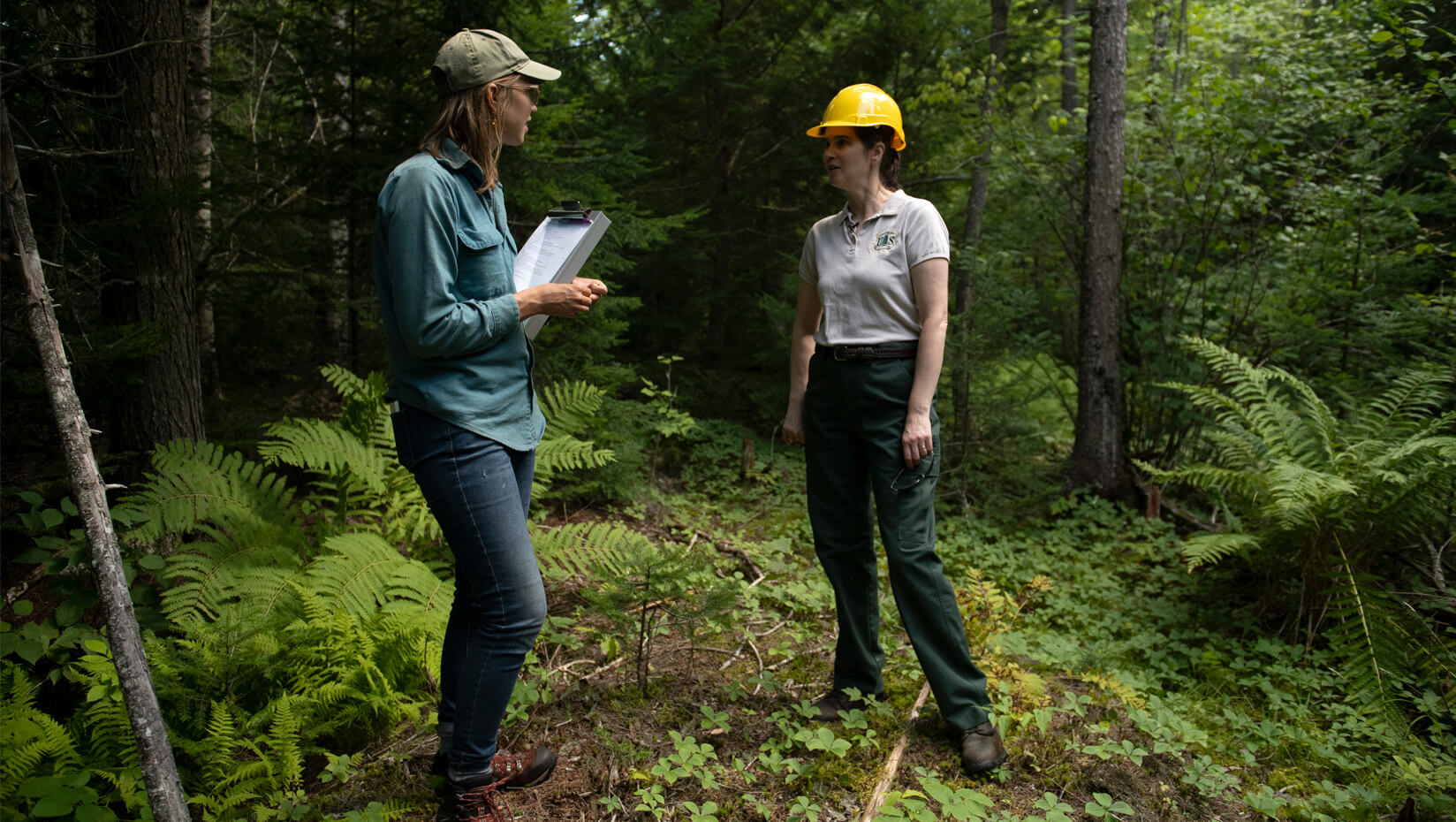
Granstrom’s video showcases long-lasting effects of forestry decisions
When Maren Granstrom learned what a forester friend in Rockland did for a living — spend days outside and talk with people about trees — she decided that was the job for her.
So the Vermont native enrolled at the University of Maine and earned a master’s in forestry. And she took part in a project spearheaded by her advisers Mindy Crandall and Laura Kenefic that caught her attention.
They were examining results from a study that started in the 1950s in the Penobscot Experimental Forest (PEF). “This was a chance to demonstrate long-term, broad-scale results of nine kinds of forest management, and to show how each type of silviculture and harvesting changed the forest over time,” says Granstrom.
“I started with no knowledge of forestry, but even in my first weeks of school I walked around the PEF and could clearly see the difference in what happened when you cut just the most valuable trees, versus cutting the lowest-quality trees first.”
The researchers plan to publish their findings in traditional ways, including in scientific journal articles. But they also thought their results could be communicated in a conversational way.
So, for part of her forest resources master’s thesis, Granstrom worked with filmmaker Scott Sell of Rockland to produce “Forestry for the Future: Lessons in Sustainable Management from Maine.”
Experts interviewed in beautiful forest settings include Kenefic, a research forester with the U.S. Forest Service and faculty associate at UMaine; Crandall, former assistant professor of forest management and economics at UMaine and now assistant professor of forest policy at Oregon State University; Keith Kanoti, manager of University Forests; Sally Stockwell, director of conservation at Maine Audubon; Bob Seymour, Curtis Hutchins emeritus professor at UMaine; Allison Kanoti, state entomologist with the Maine Forest Service; Alec Giffen, Maine representative and senior advisor with the New England Forestry Foundation; and Barrie Brusila, consulting forester.
“It was an incredible opportunity to spend a few hours with these folks and throw all my questions at them. I hope that we’ve been able to condense some of their vast knowledge, and more than 65 years of research, into a film that can help show folks the striking and long-lasting effects of forestry decisions,” says Granstrom.
“What you remove from the forest, and what you leave behind, will determine not just the future value for timber, but the wildlife species that can thrive there, the carbon storage potential, the susceptibility to pests and disease, and more.”
The 26-minute video starts and ends with Pam Wells, who owns land in Milford and Greenfield.
Initially, Wells wanted to tent on her land. Then she also became interested in caring for it, having some sawlogs taken to a mill and keeping wildlife happy. Wells has taken a number of forestry courses at UMaine to learn how to do that.
Granstrom has returned to the midcoast and is learning the forester’s trade with Brusila, a consulting forester featured in the film. “Every property we visit is a bit different. I love trying to figure out what happened there in the past and how to make that forest thrive in the future.”
Funding for the project came from the Maine Outdoor Heritage Fund, U.S. Forest Service, UMaine, and the Northeastern States Research Cooperative.
Contact: Beth Staples, beth.staples@maine.edu
